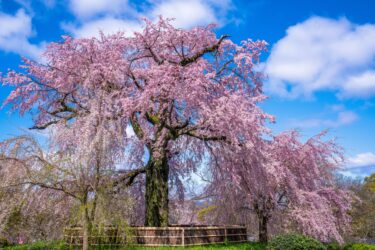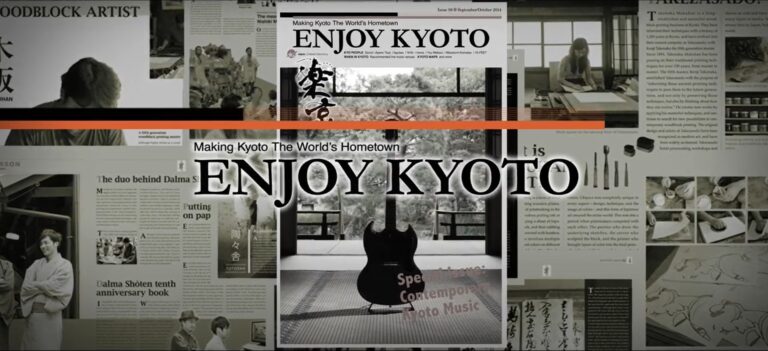If you’re visiting Kyoto and want to dive deep into traditional Japanese culture, catching a kabuki performance should be high on your list. This classical form of theater, known for its vibrant costumes, dramatic storytelling, and intricate makeup, offers a unique window into Japan’s artistic heritage. Whether you’re a theater enthusiast or simply curious about Japanese culture, here’s what you need to know about kabuki in Kyoto, from its rich history to where you can experience it today.
What is Kabuki?
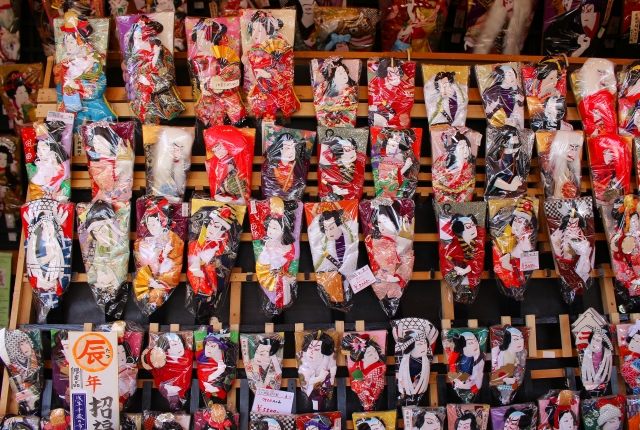

Kabuki is a traditional Japanese performing art that dates back to the early 17th century (“ka” meaning “song,” “bu” meaning “dance,” and “ki” meaning “skill” or “technique”). Kabuki is known for its highly stylized performances, which combine singing, dancing, and acting. It’s also recognizable for its elaborate costumes, striking makeup (known as kumadori, which creates the impression of exaggerated facial expressions), and the use of a unique style of dialogue and movement that might feel unfamiliar to first-time viewers. Despite the language barrier, kabuki’s visual and emotional intensity makes it a captivating experience for anyone, and one you can only find in Japan. In fact, the art form traces its origins to the city of Kyoto.
History and origins of Kabuki

Early Beginnings: Kabuki originated in Kyoto around the start of the 17th century, thanks to a shrine maiden named Izumo no Okuni (pictured above in a statue you can find today in Kyoto by Shijo Bridge), who began performing a new style of dance drama known as kabuki-odori. Her style quickly grew in popularity across social classes, and throughout Kyoto–the cultural and political heart of Japan at the time–and eventually across Japan.
Kabuki was originally performed by women, and later by young men, but eventually both types of performance were forbidden and replaced by yaro-kabuki, performed only by men. This style of kabuki began to take on the dramatic storytelling elements closer to what you see in kabuki today.
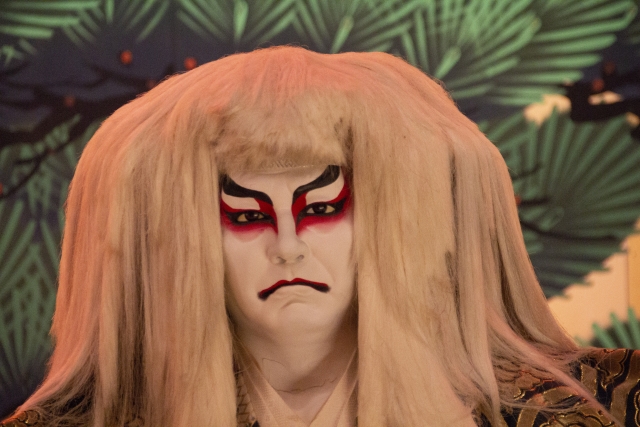
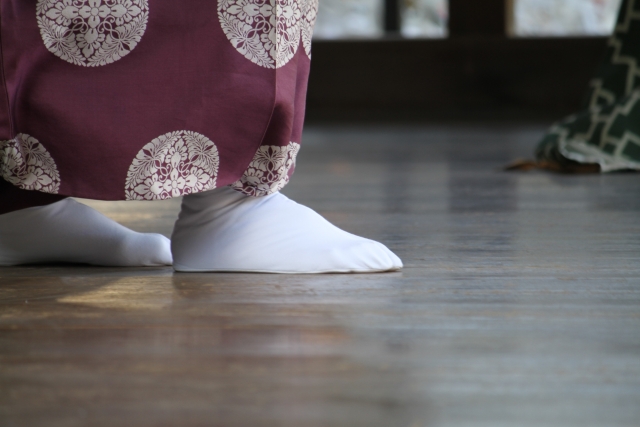
Modern Era: Though kabuki has faced its challenges over the centuries, including government bans in the 19th century and changes in cultural tastes, it has persisted and evolved. In Kyoto, efforts have been made to preserve the traditional aspects of kabuki while also making it accessible to modern audiences. Today, kabuki remains a beloved art form, deeply intertwined with Kyoto’s cultural identity.
Key Elements of Kabuki Performances
Kabuki performances are renowned for their visual splendor and the meticulous attention to detail in every aspect of the production. One of the most striking elements of kabuki is the use of highly stylized and exaggerated poses, known as mie. These dramatic poses and gestures are used to convey the emotions and character traits of the performers, creating a sense of heightened drama and intensity.
Another key aspect of kabuki is the use of elaborate costumes and makeup. Kabuki actors, known as kabuki-mono, wear intricate and colorful costumes that are meticulously designed to reflect the character they are portraying. The makeup, known as kumadori, is equally striking, with bold lines and patterns that enhance the features of the actors and help to convey their emotions and personalities.
The music and sound effects in kabuki performances also play a crucial role in creating the overall atmosphere and enhancing the storytelling. Traditional Japanese instruments, such as the shamisen, taiko drums, and various percussion instruments are used to accompany the actors. The vocal performances of the performers themselves also contribute to the unique aural experience of these productions.
Where to Experience Kabuki in Kyoto
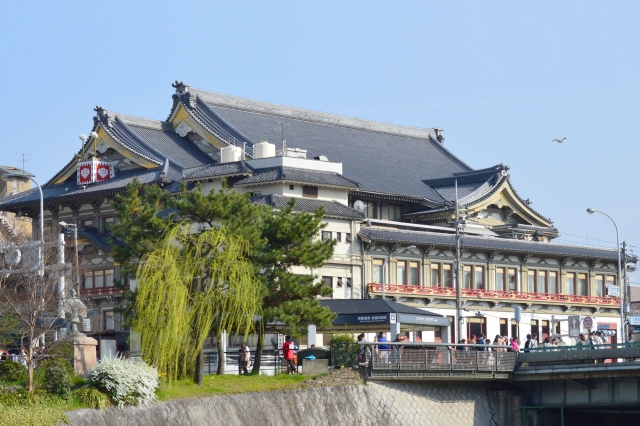
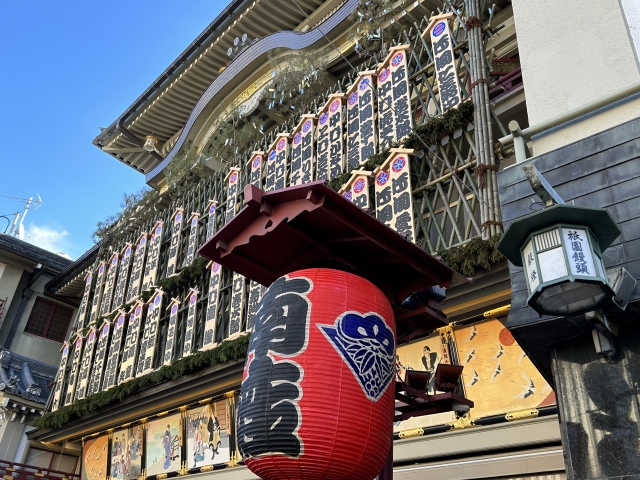
If you’re in Kyoto and want to see kabuki, the Minami-za Theatre is the place to go. Located in Gion in the heart of the city, this historic theater offers regular performances throughout the year. The building itself is a piece of history, having been rebuilt several times. The current structure dates back to 1929.
How to book tickets for Kabuki shows in Kyoto

Tickets for kabuki performances at Minami-za can be purchased online or at the theater’s box office. It’s a good idea to book in advance, especially during peak tourist seasons. Prices vary depending on the seating, with options ranging from more affordable balcony seats to pricier, up-close spots near the stage. For those unfamiliar with the language, some performances offer audio explanations in English.
Tips: A kabuki performance is a unique experience, typically lasting several hours and including multiple acts. There are intermissions, so don’t worry about sitting through the whole thing without a break. Be sure to arrive early to soak in the atmosphere and explore the theater. During the performance, you’ll notice that the audience might shout out actors’ stage names at key moments—this is a traditional form of appreciation, so don’t be alarmed!
If you find yourself in Kyoto, be sure to set aside some time to experience the magic of kabuki. Whether you attend a classic play or a more contemporary production, you’ll be treated to a visual and aural feast that will leave you in awe of the beauty and complexity of this timeless art form.





